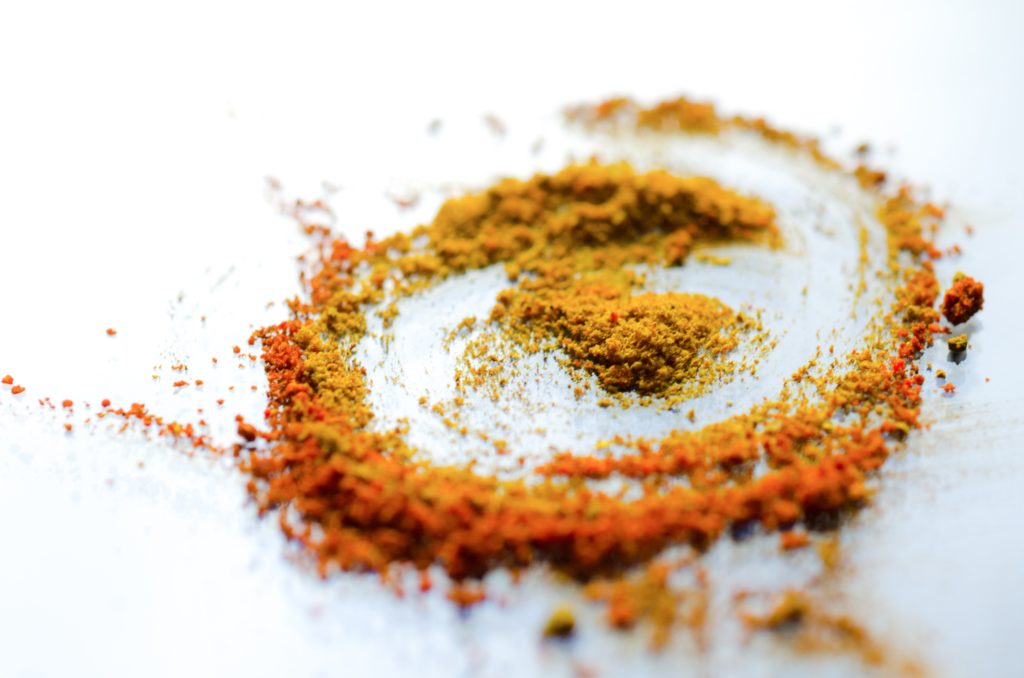Maybe you’ve been diagnosed after finding an itchy red patch on your skin that just won’t go away, or perhaps you and eczema have been lifelong companions. Whatever your history with this skin care irritation, you know that when it strikes, you want immediate relief.
So what if you could keep some home remedies for eczema on standby?
Let’s start with the basics. Eczema is a skin condition that manifests in dry, itchy patches on the body. Scratching these spots or scaly patches can often lead to rashes, blisters, and infection.
Where do these seemingly random patches on your gorgeous skin come from? I’m so glad you asked!
While symptoms of eczema seem like a surface-level issue, it is actually an autoimmune condition that is greatly affected by gut health and triggers that stimulate the immune system. Due to its nature, treating eczema goes much more than skin-deep as we explore eczema treatment that will bolster the immune system and minimize triggers for flare-ups.
Natural ways to treat eczema can be extremely beneficial, as evidence shows that limiting fragrance and preservatives when treating the skin is key.
What are the best types of eczema treatments available to use as home remedies? Let’s take a look at my top nine remedies.
1. Safflower Oil
For those with sensitive skin, safflower oil can soothe dry skin while fighting inflammation. Many of this oil’s skin benefits are attributed to vitamin E — an important, fat soluble antioxidant with protective capabilities.
Safflower Oil is non-comedogenic, so it is safe for anyone with acne prone skin! It can also be used as a carrier oil for essential oils that are too potent to apple directly, making it perfect for an eczema home remedy.
2. Coconut Oil
Perhaps you’ve heard the joke that you can use coconut oil for anything– well, eczema is no exception!
Research shows that coconut oil is very effective at moisturizing and improving skin health in cases of eczema, while reducing inflammation. Its antibacterial and antifungal properties may also help prevent the skin infections that are common in this condition.
Try applying this oil once or twice daily to the affected area, on dampened skin.
I do have a few cautions, though: you’ll want to use organic, cold-pressed and unrefined coconut oil for any home remedies; in other words, give your skin the best quality to avoid further irritation.
Also, you may not want to slather it on and always wash your skin after use, especially if you have an oily skin type, to avoid acne breakouts.
3. Oatmeal Baths
Who doesn’t love a soothing dip in the bath, and even better, one that soothes itchy skin? Oatmeal baths can provide relief for eczema flares and sensitive skin. Colloidal oatmeal in your bath water can not only calm the skin, but provide future protection and balance the pH of the skin.
Draw a bath that’s warm but not hot, as very hot water can cause even more irritation, and add roughly one cup of colloidal oatmeal as the water is running, mixing them throughout the tub until they leave the water with a comforting, milky texture.
4. Aloe Vera

While you may have only used it for sunburns, aloe vera can be a powerful home remedy for eczema. It has been shown to have antimicrobial, antioxidant, wound-healing, and immune-boosting properties; all things that can help stave off or shorten pesky eczema outbreaks.
You can use aloe vera the same way you’d use other lotions or moisturizers, by rubbing topically into the affected area. You can even reapply twice a day to alleviate your dry skin as it heals.
5. Bleach Baths
Dilute bleach baths are not as aggressive as they sound! Fifteen studies found that not only do dilute bleach baths reduce the need for topical steroids and antibiotics, but they restore the skin’s microbiome and reduce inflammation. That’s all good news.
For a safe dilute bleach bath, add 1 teaspoon of bleach to each gallon of water, mix well and then get into the water and only soak the affected areas for 5-10 minutes. Don’t allow pure bleach to contact the skin directly. Be sure to rinse the skin thoroughly with water after the bath, and only leave the skin in contact with dilute bleach bath for five to ten minutes at most.
6. Diet
Eating anti-inflammatory foods, foods full of vitamin C, and those packed with probiotics is one of the most overlooked home remedies to treat underlying autoimmune issues. These types of foods can improve digestive health, speed up healing times, and strengthen the immune system.
Some of the top foods to munch on in this category include:
- Leafy greens like spinach and chard
- Bell peppers
- Oranges
- Fish high in fatty acids
- Sauerkraut
- Kefir
- Nuts
Eliminating common inflammatory items like wheat, sugar, dairy, and soy can also aid in the healing process.
7. Turmeric

There are many uses for turmeric as a home remedy, because it holds antioxidant and anti-inflammatory properties that many claim will relieve eczema symptoms. Taking turmeric may protect the gut from inflammatory responses and certain dietary triggers.
It is also available as a topical cream, though less research is available on its efficacy. Safe dosage typically ranges from 1,000-2,000 mg a day.
8. Manuka Honey
Not only is manuka honey an antioxidant, anti-bacterial, and anti-inflammatory, but it has been shown to enhance wound healing. It also helps to soften skin and keep it moisturized.
Healing wounds treated with manuka honey presented less stiff skin with a smaller overall scar appearance. If you suffer from consistent eczema, this could be a big help to soothe skin and reduce unsightly scarring.
9. Essential Oils
The first thing to know about topical application of an essential oil is to always, always use a carrier oil (I recommend rosehip, safflower, coconut oil or jojoba oil for eczema). Next, it’s time to choose your essential oils.
While there’s not much research specifically tying tea tree oil to eczema, we do know that it can help with contact dermatitis, or rashes caused by contact with a substance. Perhaps they may help in cases of flare-ups from fragrances or fabrics.
One small study found that calendula oil can reduce pain, swelling, and inflammation when applied topically. While more studies are needed, the initial results sound promising.
With any essential oils or home remedies, talk to your dermatologist or doctor and do a skin patch test before diving in.
10. Relaxation

While it may sound counterintuitive while scratching at an annoying dry patch, relaxing can reduce stress levels, which can in turn positively affect the immune system. Yes, stress really is bad for your immune system, and therefore your eczema.
Try a calming meditation, getting a good night’s rest, a great laugh with wholehearted friends, or one of my other stress relief home remedies. You might notice a shift in not only your mood, but your eczema as well.
Eczema in Babies & Children
Try baby mittens to keep small hands from scratching any flare-ups. It’s also important to avoid a number of things: heat, fragrances in soaps and shampoos, alcohol and diaper wipes that can dry the skin, and daily baths.
Truly, your child should only need two baths weekly unless they are extremely sweaty (which can exacerbate eczema).
Also attempt to implement helpful routines like oatmeal baths and a frequent routine of moisturizing skin directly after baths and showers to lock in moisture. In the winter, avoid dressing your child too warmly to prevent a heat rash or trapping sweat, both of which aggravate eczema.
Sources
- Nemeth, V., & Evans, J. (2019). Eczema. In StatPearls [Internet]. StatPearls Publishing. Full text: https://www.ncbi.nlm.nih.gov/books/NBK538209/
- Ong, P. Y., & Leung, D. Y. (2016). Bacterial and viral infections in atopic dermatitis: a comprehensive review. Clinical reviews in allergy & immunology, 51(3), 329-337. Abstract: https://www.ncbi.nlm.nih.gov/pubmed/27377298
- Kamińska, E. (2018). The role of emollients in atopic dermatitis in children. Developmental period medicine, 22(4), 396-403. Abstract: https://www.ncbi.nlm.nih.gov/pubmed/30636240
- Asp, M. L., Collene, A. L., Norris, L. E., Cole, R. M., Stout, M. B., Tang, S. Y., … & Belury, M. A. (2011). Time-dependent effects of safflower oil to improve glycemia, inflammation and blood lipids in obese, post-menopausal women with type 2 diabetes: a randomized, double-masked, crossover study. Clinical nutrition, 30(4), 443-449. Abstract: https://www.sciencedirect.com/science/article/abs/pii/S0261561411000021
- Full Text: https://www.ncbi.nlm.nih.gov/pmc/articles/PMC4976416/
- Evangelista, M. T. P., Abad‐Casintahan, F., & Lopez‐Villafuerte, L. (2014). The effect of topical virgin coconut oil on SCORAD index, transepidermal water loss, and skin capacitance in mild to moderate pediatric atopic dermatitis: a randomized, double‐blind, clinical trial. International journal of dermatology, 53(1), 100-108. Abstract: https://www.ncbi.nlm.nih.gov/pubmed/24320105
- Agero, A. L., & Verallo-Rowell, V. M. (2004). A randomized double-blind controlled trial comparing extra virgin coconut oil with mineral oil as a moisturizer for mild to moderate xerosis. Dermatitis, 15(3), 109-116. Abstract: https://www.ncbi.nlm.nih.gov/pubmed/15724344
- Intahphuak, S., Khonsung, P., & Panthong, A. (2010). Anti-inflammatory, analgesic, and antipyretic activities of virgin coconut oil. Pharmaceutical biology, 48(2), 151-157. Abstract: https://www.ncbi.nlm.nih.gov/pubmed/20645831
- Verallo-Rowell, V. M., Dillague, K. M., & Syah-Tjundawan, B. S. (2008). Novel antibacterial and emollient effects of coconut and virgin olive oils in adult atopic dermatitis. Dermatitis, 19(6), 308-315. Abstract: https://www.ncbi.nlm.nih.gov/pubmed/19134433
- Catherine Mack Correa, M., & Nebus, J. (2012). Management of patients with atopic dermatitis: the role of emollient therapy. Dermatology research and practice, 2012. Full text: https://www.ncbi.nlm.nih.gov/pmc/articles/PMC3449106/
- Radha, M. H., & Laxmipriya, N. P. (2015). Evaluation of biological properties and clinical effectiveness of Aloe vera: A systematic review. Journal of traditional and complementary medicine, 5(1), 21-26. Full text: https://www.ncbi.nlm.nih.gov/pmc/articles/PMC4488101/
- Maarouf, M., & Shi, V. Y. (2018). Bleach for atopic dermatitis. Dermatitis, 29(3), 120-126. Abstract: https://www.ncbi.nlm.nih.gov/pubmed/29762205
- Chainani-Wu, N. (2003). Safety and anti-inflammatory activity of curcumin: a component of tumeric (Curcuma longa). The Journal of Alternative & Complementary Medicine, 9(1), 161-168. Abstract: https://www.ncbi.nlm.nih.gov/pubmed/12676044
- Hewlings, S. J., & Kalman, D. S. (2017). Curcumin: a review of its’ effects on human health. Foods, 6(10), 92. Full text: https://www.ncbi.nlm.nih.gov/pmc/articles/PMC5664031/
- Rahmani, A. H., Alsahli, M. A., Aly, S. M., Khan, M. A., & Aldebasi, Y. H. (2018). Role of curcumin in disease prevention and treatment. Advanced biomedical research, 7. Full text: https://www.ncbi.nlm.nih.gov/pmc/articles/PMC5852989/
- Yaghoobi, R., & Kazerouni, A. (2013). Evidence for clinical use of honey in wound healing as an anti-bacterial, anti-inflammatory anti-oxidant and anti-viral agent: A review. Jundishapur journal of natural pharmaceutical products, 8(3), 100. Full Text: https://www.ncbi.nlm.nih.gov/pmc/articles/PMC3941901/
- Niaz, K., Maqbool, F., Bahadar, H., & Abdollahi, M. (2017). Health benefits of manuka honey as an essential constituent for tissue regeneration. Current drug metabolism, 18(10), 881-892. Abstract: https://pubmed.ncbi.nlm.nih.gov/28901255-health-benefits-of-manuka-honey-as-an-essential-constituent-for-tissue-regeneration/
- Malhotra, R., Ziahosseini, K., Poitelea, C., Litwin, A., & Sagili, S. (2017). Effect of manuka honey on eyelid wound healing: a randomized controlled trial. Ophthalmic Plastic & Reconstructive Surgery, 33(4), 268-272. Abstract: https://pubmed.ncbi.nlm.nih.gov/27429228-effect-of-manuka-honey-on-eyelid-wound-healing-a-randomized-controlled-trial/
- Meier, L., Stange, R., Michalsen, A., & Uehleke, B. (2012). Clay jojoba oil facial mask for lesioned skin and mild acne–results of a prospective, observational pilot study. Complementary Medicine Research, 19(2), 75-79. Abstract: https://www.karger.com/Article/Abstract/338076
- Wallengren, J. (2011). Tea tree oil attenuates experimental contact dermatitis. Archives of dermatological research, 303(5), 333-338. Abstract: https://www.ncbi.nlm.nih.gov/pubmed/20865268
- Akihisa, T., Yasukawa, K., Oinuma, H., Kasahara, Y., Yamanouchi, S., Takido, M., … & Tamura, T. (1996). Triterpene alcohols from the flowers of compositae and their anti-inflammatory effects. Phytochemistry, 43(6), 1255-1260. Abstract: https://www.ncbi.nlm.nih.gov/pubmed/8987908
- Morey, J. N., Boggero, I. A., Scott, A. B., & Segerstrom, S. C. (2015). Current directions in stress and human immune function. Current opinion in psychology, 5, 13-17. Full text: https://www.ncbi.nlm.nih.gov/pmc/articles/PMC4465119/
